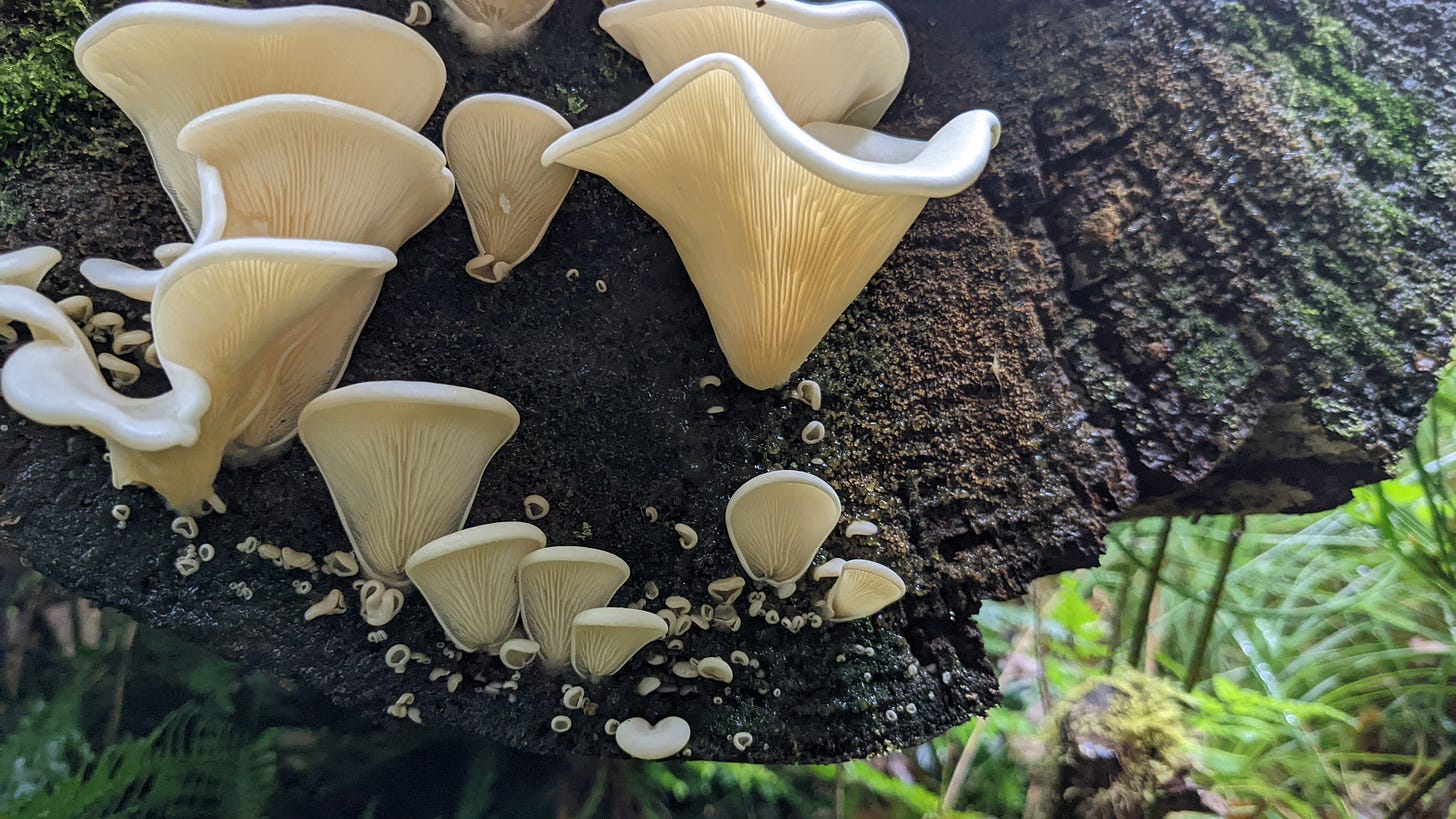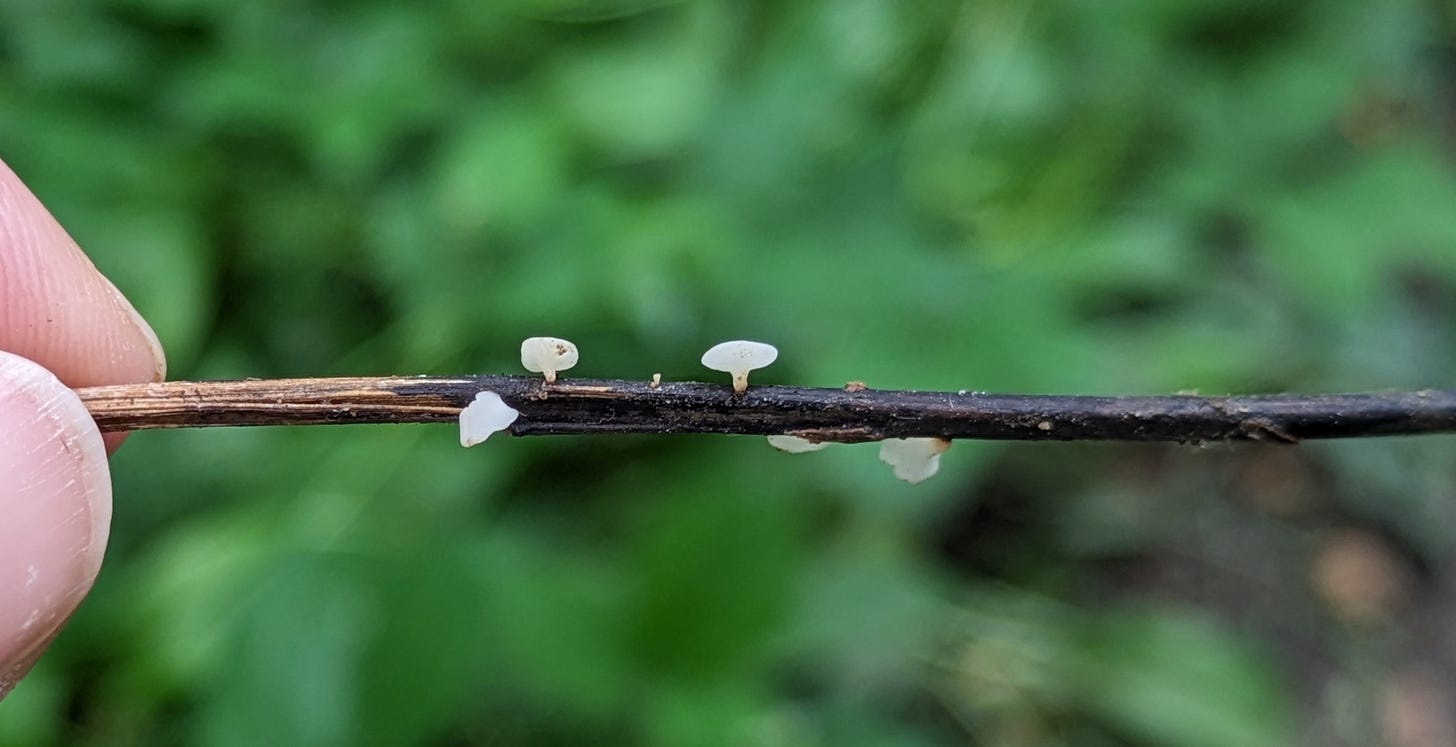Last weekend, as I was pulling up some bindweed that was strangling the foxgloves in my garden, I saw out of the corner of my eye I’d also pulled up something bright orange. Looking down, I was pretty gobsmacked to discover that I was holding a large chunk of chicken of the woods! A forager’s favourite - Laetiporus sulphureus is an easily identifiable fungi that grows on the trunks and stumps of oak, cherry, sweet chestnut, willow and yew*. I’ve searched for this mushroom (which can be used as a brilliant chicken substitute in cooking) on walks many times, and always come home empty-handed, despite the fact it’s supposed to be fairly common and easy to find. I couldn’t believe there was some just sitting outside my back door, growing in the gap between my flower bed and my fence.

This isn’t the first fungi I’ve found in the garden - when we moved into this house there were already several wooden planters here. They are all, admittedly, falling apart a bit... but I’m loathe to replace them, because not only have I discovered several types of mushrooms growing on them, but I think they provide a great habitat for all sorts of critters and ‘creepy crawlies’.
At this time of year I see a lot of sulphur tubics around the garden. They’re tiny moths and I always think they look like they’re wearing teeny weeny yellow bikinis. This week I discovered that their larvae feed on dead wood, so they’re probably munching through my planters as I type.
Noticing Nature Prompt
Because of all this, my task for you this week is this: find a bit of dead wood and then look at it closely. Can you spot anything living on it? Maybe you can see some lichen or moss, it might be covered in mushrooms (King Alfred’s cakes are a good one to look for) or perhaps there’s a colony of ants walking along it, carrying things. Maybe it’s simply a bit of dead wood and (at least to your naked eye) you can’t spot anything living on it at all. In which case, find another bit of wood and look at that…
You might find that something which appears dead on the surface is actually brimming with life…

Important notice: Never eat something unless you’re 100% sure you can identify it correctly. Do your research and make sure it’s safe to eat, and in what quantities. In the UK, we have common law to forage the four Fs (fruit, flowers, fungi and foliage) for personal consumption, but never uproot anything without permission and only take what you need if it’s growing in abundance - leave enough for wildlife to thrive!
If you’re looking for more ways to immerse yourself in the natural world, you can sign up for 30 Days Wild, The Wildlife Trusts' annual challenge event, where everyone involved does one wild thing a day throughout the month of June.









The bikini! Love it.
Thank you Zabby. I always appreciate your invitations to notice